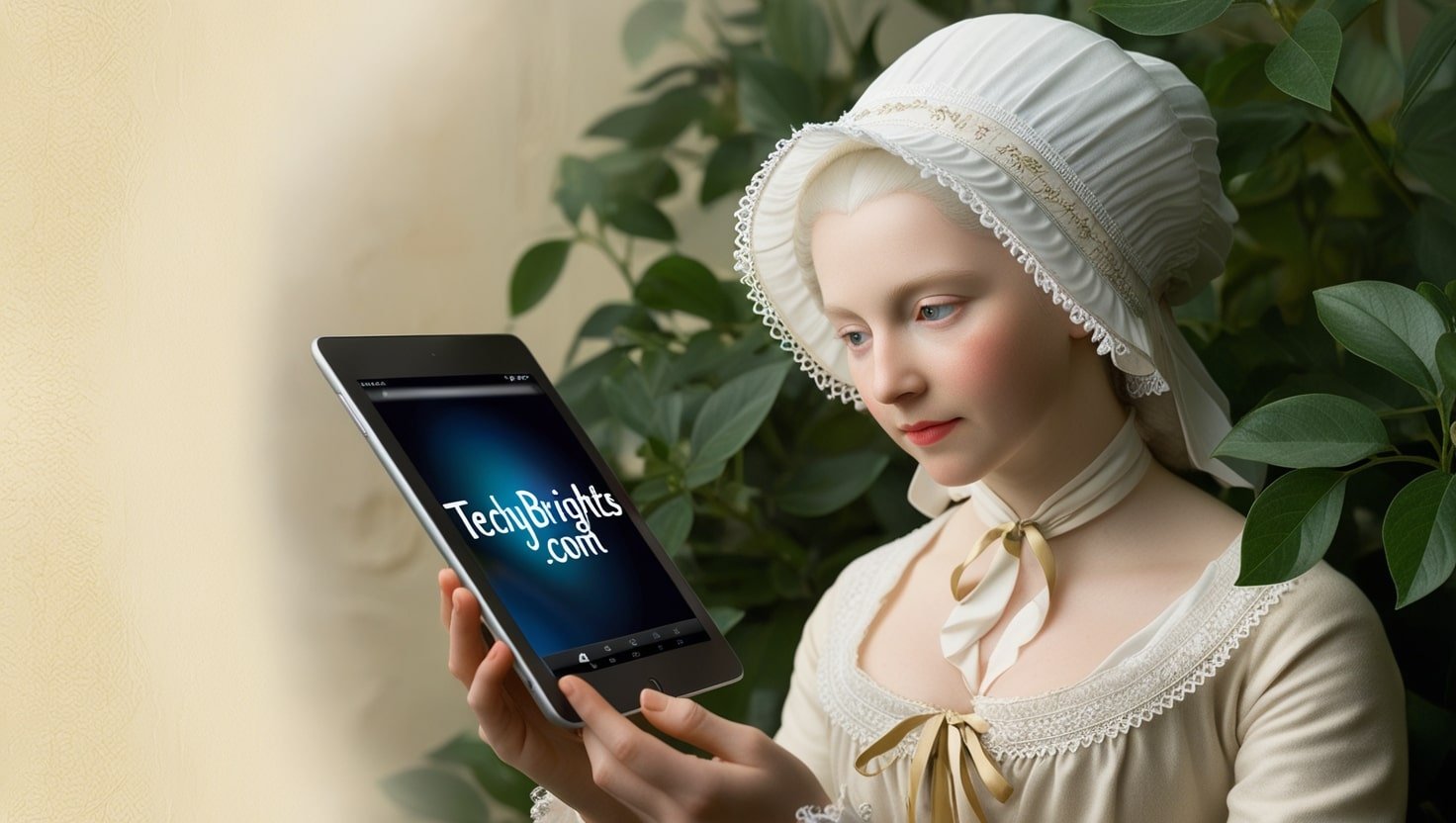The 1700s white drawstring bonnets were more than just a practical item worn by women; they were an essential part of fashion and culture during that time. This unique piece of clothing reflects the style, sensibilities, and societal norms of the 18th century, providing insight into how women dressed, what they valued, and how fashion was intertwined with their daily lives. In this article, we will explore the historical significance of the 1700s white drawstring bonnets, their design, their role in fashion, and their cultural relevance.
What Were 1700s White Drawstring Bonnets?
The 1700s white drawstring bonnets were a type of headwear designed to cover the hair and provide protection from the sun while adding an element of modesty. These bonnets were often made from soft, lightweight fabric, predominantly white cotton or linen, and featured a drawstring at the neck, which allowed them to be easily adjusted for comfort and fit. The soft, flowing fabric of these bonnets helped protect women from the elements while also serving as a key fashion accessory that reflected the style of the 18th century.
The drawstring feature of these bonnets made them both practical and stylish. The 1700s white drawstring bonnets were typically worn by women of various social classes and were considered a common accessory for both everyday wear and special occasions. They were often used to frame a woman’s face and complement the intricate hairstyles popular at the time.
The Origins of the 1700s White Drawstring Bonnets
Bonnets have a long history, but the 1700s white drawstring bonnets emerged during the early part of the 18th century. While women had been wearing bonnets in various forms for centuries, the design and popularity of the white drawstring bonnet became particularly prominent during this period.

The 1700s white drawstring bonnets were inspired by a combination of practical needs and fashion trends. During this time, women sought clothing that was both functional and fashionable, and the bonnet fulfilled both roles. The drawstring element was an important feature that added versatility, allowing women to adjust the fit of their bonnet according to their preferences.
The Role of the 1700s White Drawstring Bonnets in Fashion
The 1700s white drawstring bonnets were an integral part of the overall fashion of the 18th century. Fashion during this period was characterized by elaborate, luxurious clothing that often featured intricate details and decorative embellishments. The 1700s white drawstring bonnets fit into this trend, offering a delicate and refined look that complemented the more lavish garments worn by women.
Women in the 1700s wore their bonnets as a way to express their social status and fashion sense. A bonnet’s material, design, and decoration could indicate a woman’s wealth and taste. While the basic white drawstring bonnets were commonly worn by women of all social classes, those from wealthier families might opt for bonnets with lace, ribbons, or other decorative features to make their headwear more elaborate and fashionable.
The Evolution of the 1700s White Drawstring Bonnets
The design of the 1700s white drawstring bonnets evolved over time. Initially, these bonnets were simple, utilitarian pieces of clothing designed for function. However, as the century progressed, they became more decorative and were incorporated into the fashion trends of the time. By the late 1700s, the 1700s white drawstring bonnets were more structured and often featured embellishments such as ribbons, lace, and decorative trims.
While the basic concept of the bonnet remained the same, the materials and styles continued to change. For example, as fashion trends shifted, women began to wear bonnets that were more elaborate, with wider brims and more attention paid to detail. The 1700s white drawstring bonnets thus transformed from simple accessories into fashionable and sophisticated statements of style.
Materials Used for the 1700s White Drawstring Bonnets
The materials used for the 1700s white drawstring bonnets were typically natural fabrics such as linen, cotton, and silk. These fabrics were chosen not only for their availability but also for their ability to provide comfort and protection from the elements. Cotton and linen were particularly popular choices for their lightweight and breathable properties, making them ideal for the warmer months.

In addition to the basic fabric, some 1700s white drawstring bonnets were embellished with lace, ribbons, or decorative trim, which added an extra layer of elegance to the headwear. The quality of the fabric and the level of decoration often indicated a woman’s social standing, with wealthier individuals opting for finer materials and more intricate designs.
The Importance of the 1700s White Drawstring Bonnets for Modesty
Modesty was a significant cultural value during the 1700s, and the 1700s white drawstring bonnets played an important role in helping women maintain their modesty in public. During this time, it was considered improper for women to display their hair in public, so the bonnet served as a way to cover their hair while also providing a sense of privacy and dignity.
The 1700s white drawstring bonnets were not just a fashionable accessory but also a tool that helped women adhere to the social expectations of the time. By covering their hair and framing their faces with these bonnets, women were able to maintain a sense of propriety while still looking fashionable and elegant.
The 1700s White Drawstring Bonnets and Social Class
As with many aspects of 18th-century fashion, the 1700s white drawstring bonnets were influenced by social class. While these bonnets were worn by women of all social standings, the style, materials, and level of decoration varied significantly depending on a woman’s wealth and status.
Wealthier women, especially those in the upper classes, often wore more elaborate versions of the 1700s white drawstring bonnets. These bonnets featured higher-quality fabrics like silk or fine cotton, and they were often decorated with lace, ribbons, and other luxurious embellishments. On the other hand, women from lower social classes typically wore simpler bonnets made from more affordable materials such as plain cotton or linen.
The 1700s White Drawstring Bonnets and the Working Woman
While many women from the upper classes wore elaborate versions of the 1700s white drawstring bonnets, working women also embraced this style, albeit in a simpler form. The 1700s white drawstring bonnets offered practical benefits, particularly for women who worked outdoors or in environments where sun protection was important.
Farmers, laborers, and women working in fields or gardens would often wear basic 1700s white drawstring bonnets as a way to shield their faces and necks from the harsh sun. These bonnets allowed women to remain comfortable and protected while going about their daily tasks, demonstrating the versatility and importance of the bonnet in the lives of women across social classes.
The 1700s White Drawstring Bonnets and Hairstyles
The 1700s white drawstring bonnets were often worn in conjunction with elaborate hairstyles. Women of the 18th century invested significant time and effort into creating intricate hairstyles, and the bonnet played a crucial role in completing the look. The bonnets were designed to frame the face and complement the hairstyle, often adding an element of softness and elegance.
In many cases, the bonnet was worn over the hair as a final touch to a carefully styled updo. The white drawstring bonnet worked in harmony with the rest of the outfit, providing balance to the bold and sometimes voluminous hairstyles that were popular during this period.
The 1700s White Drawstring Bonnets in Art and Literature
The 1700s white drawstring bonnets were often depicted in art, literature, and other forms of cultural expression. These bonnets symbolized femininity, modesty, and elegance, making them an enduring icon of 18th-century fashion. Artists often portrayed women wearing these bonnets in their portraits, using the headwear as a symbol of grace and refinement.
In literature, the 1700s white drawstring bonnets were frequently referenced as part of the typical dress of women during this period. Writers of the time, particularly those who wrote about social mores and gender roles, used the bonnet as a way to highlight the roles women played in society and the importance of maintaining proper appearance and behavior.
The 1700s White Drawstring Bonnets and Historical Reenactments
Today, the 1700s white drawstring bonnets continue to be popular in historical reenactments and period dramas. These bonnets are an essential part of the costume for many reenactors and filmmakers who seek to authentically portray life in the 18th century. The 1700s white drawstring bonnets help to recreate the look and feel of the time, offering a tangible connection to the past.

Reenactors often wear these bonnets as part of their outfits, whether they are portraying women in the upper classes or those from working-class backgrounds. The bonnets help to bring history to life and provide a visual representation of the everyday lives of women during the 1700s.
The Legacy of the 1700s White Drawstring Bonnets
The legacy of the 1700s white drawstring bonnets continues to live on today, both as a historical artifact and as a symbol of 18th-century fashion. These bonnets represent a time when clothing was intricately linked to social class, gender, and modesty. While the 1700s white drawstring bonnets may no longer be worn daily, their impact on fashion and culture remains significant.
The bonnets serve as a reminder of the past and the ways in which fashion has evolved over the centuries. Their timeless design and enduring appeal continue to captivate those who study fashion history, and they remain a symbol of the elegance and style of the 18th century.
Conclusion
In conclusion, the 1700s white drawstring bonnets were more than just a piece of clothing; they were a symbol of the culture, fashion, and societal norms of the 18th century. Worn by women across social classes, these bonnets served both functional and fashionable purposes, from protecting women from the sun to framing their faces and complementing intricate hairstyles. Today, the 1700s white drawstring bonnets continue to be celebrated for their historical significance, and they remain a lasting symbol of the elegance and modesty that defined the fashion of the time.



